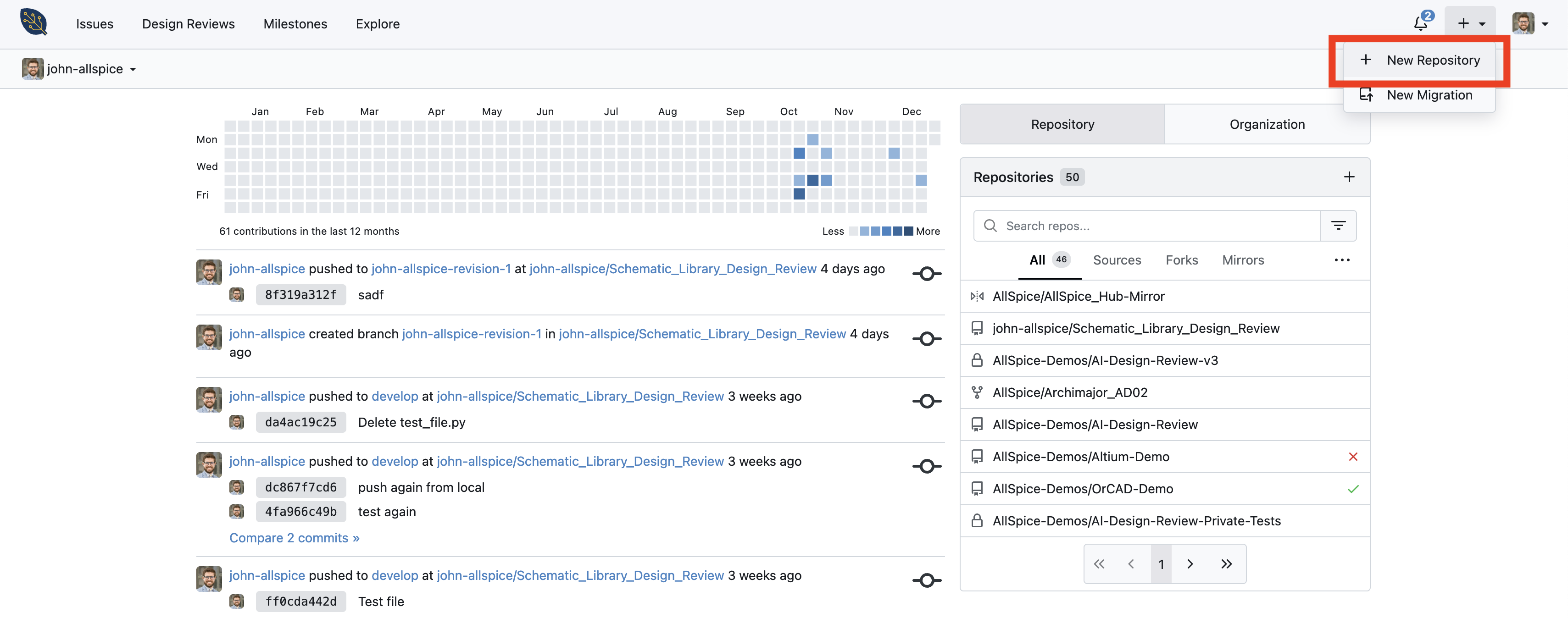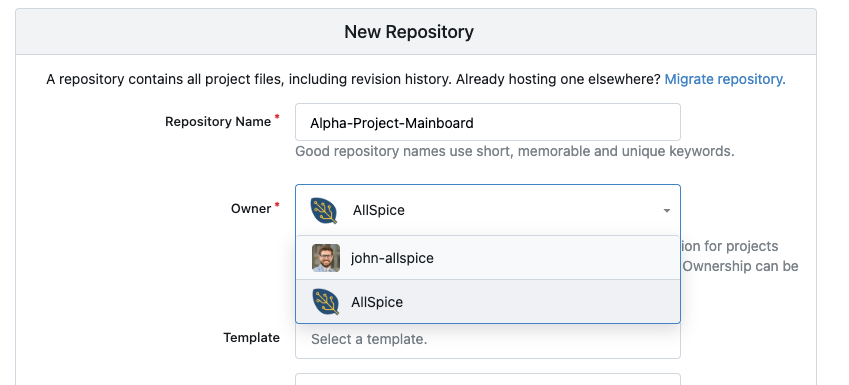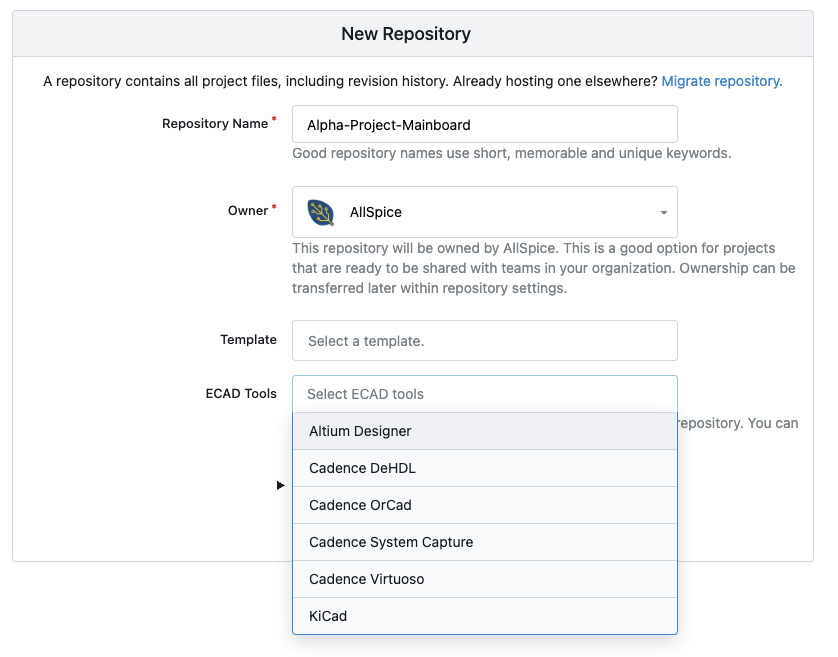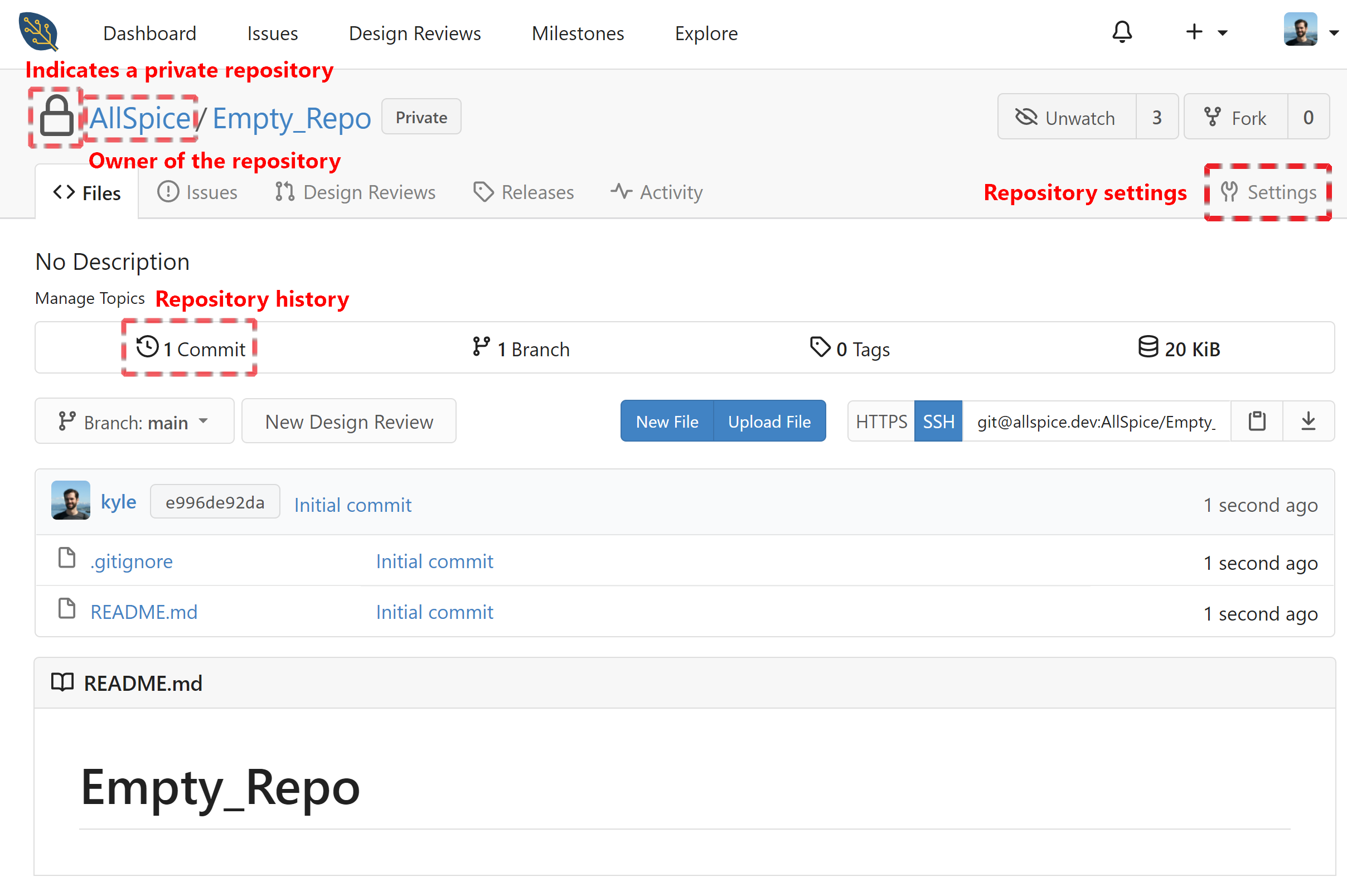The first thing you'll need to do to get your electronics design project in AllSpice Hub is create a new repository. In general, each design (PCBA) should have its own repository.
Step-by-step guide
0. Open a new repository
To get started, navigate to your dashboard and select New Repository in the top right. This will open a new page where you'll be able to configure your new repository.

1. Repository Name
Name your repository using only alphanumeric, dash ('-'), underscore ('_') and dot ('.') characters. The repository should oftentimes be named after the design (PCBA).

2. Owner
If you are part of an organization you should make the organization the owner so that teams will have appropriate access to the new repository. Set yourself as the owner only if you do not intend to share with your team initially. This setting can be changed in repo settings later.

3. Template
If you or your organization have any repository templates you can select one here to automatically populate the initial settings and content in the repository.
To create a new template for your organization, follow our How to create a repo template guide.
If you select a template here you can skip to step 12 of this tutorial.
4. ECAD Tools
Telling Allspice what ECAD tools you use will help tell it what it can ignore in a directory. If you need more control than this, choose further files within the .gitignore option in Advanced Settings.
 Advanced Settings
Advanced Settings
Collapsed by default are Advanced Settings that you can use to further configure your repository.
5. Description
Use the description to briefly explain what this project is, why it exists, and who it’s for. This will give other users further clarity when browsing or onboarding. 
6. Visibility
By default you should set visibility as private. This will allow only teams and organization members access to the new repository if they have been granted permissions in the organizations settings. Members can also be granted direct access in repository settings after the repository is created.
If the owner in step 2 above is set to your organization, unchecking "Private" will have different behaviors depending on how organization visibility is set:
- Visibility Private (default): All users in an organization can view the repository content.
- Visibility Limited: Anyone with an AllSpice login can view the repository content.
- Visibility Public: Anyone can view the repository content.
If the owner above is set to your username, unchecking "Private" will allow anyone to view the repository content. If you do this, we strongly suggest adding an open-source license below.
7. Issue Labels
Here you can select an initial set of labels you can later apply to issues you create. You can select the default group, which is a pre-created set of hardware labels. These can be further configured in organization settings.

6. .gitignore
A .gitignore file will tell Git what files and folders it can ignore in a directory. If you are using Altium and have selected Altium in the ECAD Tools in Step 4, you will see Altium already selected from the list to use AllSpice's pre-populated .gitignore. This .gitignore prevents file types that don't need to be revision-controlled, like previews, temporaries, or assembly exports, from bloating your repository. You can view and edit this later after you have created the repository.
If you will be adding C-code or other firmware to this repository, you can add those as well.


7-9. README, Branching Workflow and Default Branch
Unless you are an advanced user, the following settings can be left at default. You can find more information on these settings in the description.
11. Template
Only check "template" if you intend to use this repository only as a template to create new repositories from. Visit our guide on how to create repo templates to learn more.

12. Create
After reviewing all your new repository configurations, click the green Create Repository button at the end. This will take you to your new repo's file page, where you can see an overview. From there, you can access the settings to make any changes, or continue to clone it locally.

Repository Overview

